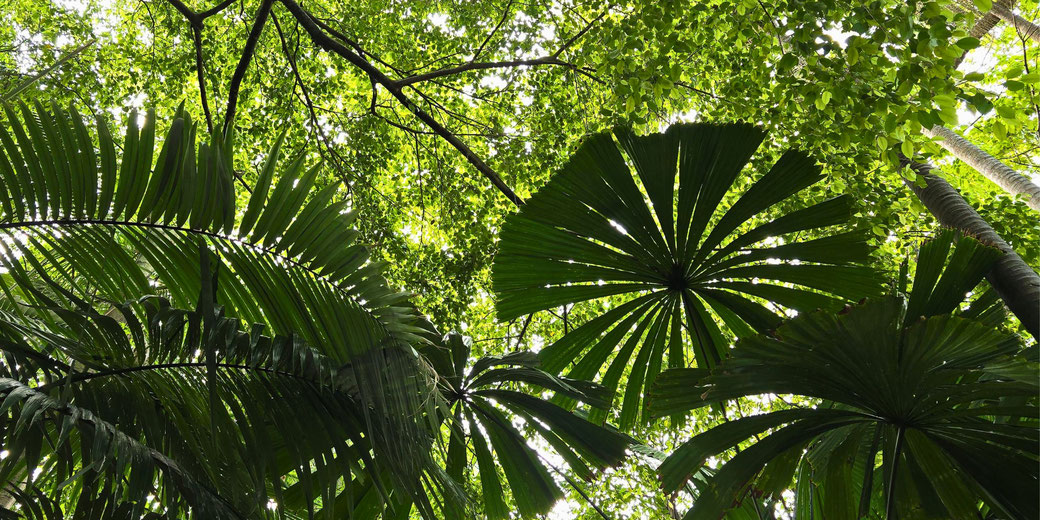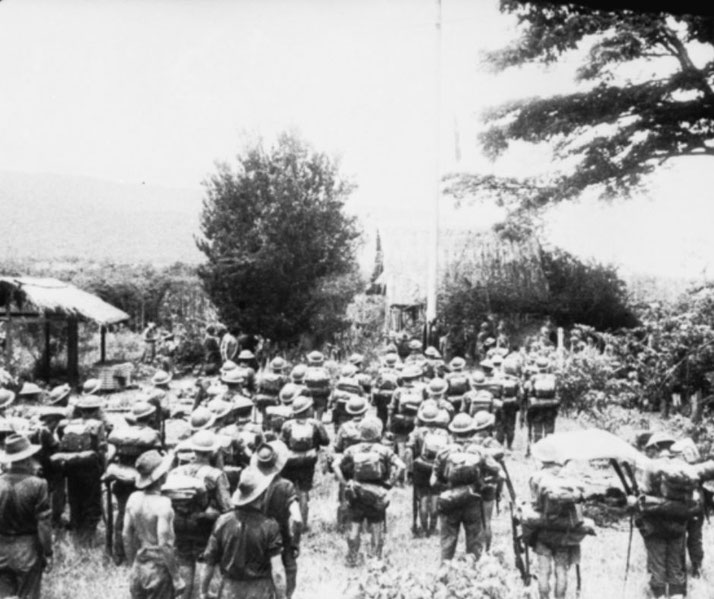Why the brutal Kokoda Track Campaign was a turning point in WWII

The Kokoda Campaign of World War Two was an important turning point in the conflict, as it was one of the first times that the Japanese army had been stopped on land since the beginning of the war.
In order to achieve this though, Australian soldiers undertook a fighting retreat against overwhelming odds. Initially hoping just to slow the Japanese advance, the Allies ultimately drove the Japanese back completely.
The seemingly unstoppable Japanese expansion
Following the attack on Pearl Harbor in 1941 that had started the Pacific Theatre of WWII, the Japanese had quickly expanded south and captured the strategically important British base in Singapore in February 1942.
Within the next few months, the Japanese had continued to move south and had even reached Papua New Guinea.
By May, they were seeking to control this region as well by capturing the capital city of Port Moresby
Initially, the Japanese had sent their navy to seize control by sea. However, they were stopped by a combined American and Australian fleet at the Battle of the Coral Sea on the 4th-8th May 1942.
Unable to reach the city by sea, the Japanese sought to march troops across land to capture Port Moresby instead.
With the impending arrival of the Japanese, the Allied commanders in the region had to rely upon the only available defenders in Papua New Guinea at the time: the 39th Militia Battalion troops from Australia.
Militia were not regular army soldiers. They were volunteers who had only received basic combat training and were still considered part of the Australian Army Reserve.
Regardless, they were instructed to advance north along a jungle path, known as the Kokoda track, to engage the Japanese and attempt to slow them down.
These Australian troops reached the village of Kokoda, halfway along the track on the 15th of July 1942.
On the 21st of July, around 1500 Japanese soldiers of the Japanese South Seas Force, under the command of General Tomitaro Horii, landed near Gona-Buna on the north coast of Papua New Guinea.
They began marching south along the Kokoda Track, towards Port Moresby.
Retreating for their lives
The first contact with the Japanese forces occurred at Awala on the 23rd of July.
The militia troops were significantly outnumbered and knew that they did not stand much hope in a direct battle with the Japanese forces.
So, it was decided that they were to gradually retreat back down the track they had marched up while fighting a series of smaller battles while doing so.
As the Australians retreated, the Japanese advance did slow down as hoped.
However, it did not stop them entirely and the Japanese captured the village of Kokoda on the 29th of July.
By the 14th of August, the militia troops had retreated to Isurava where they prepared defenses for fight their first pitched battle against the invaders.
This first major engagement of the campaign, known as the Battle of Isurava, occurred from the 26th-30st of August 1942.
However, despite putting up fierce resistance, the Australians were quickly outgunned.
They lost 200 men and, realising that they were facing complete annihilation if they stayed, the Australians had to fall back once more.
Allied airmen tried to support the soldiers as best they could by dropping supplies along the track, while also making repeated air attacks on the enemy’s supply lines.
By this stage, however, the Australians had retreated so far, that they were almost back at Port Moresby again.
They finally stopped at Imita Ridge, just 50 kilometres from the city on the 17th of September 1942.
This was the last strong defensive position before Port Moresby itself and the Australians knew that they had to prepare for their final stand.
Allied counter-advance
By this stage, the Australian militia forces had been joined by additional battalions of the Australian Infantry Force.
These reinforcements were a vital boost to the demoralised defenders, who now believed that a vastly larger and well-equipped Japanese army was about to arrive at their position.
However, not all was well in the Japanese army. By the 24th of September, they had advanced far beyond the range of their supply lines.
As a result, they had been dangerously low on both food and ammunition for almost two weeks.
The soldiers were exhausted, starving, and did not have enough bullets to fight a full battle.
As a result, the Japanese commander decided that his men were on the edge of defeat.
So, he ordered his troops to retreat back north along the Kokoda Track to reconnect with fresh supplies.
It was not until Allied patrols explored the area on the 28th of September, that they discovered that the Japanese had gone.
As a result, the Australians decided to pursue them, and the roles of the two armies were now reversed.
The Japanese had to begin their own fighting retreat, while the Australians, with their new reinforcements, were chasing them.
Victory
The Japanese army never received the supplies that they needed, primarily due to the fact that their navy was occupied in battles against the Americans and were unable to reach the shores of Papua New Guinea.
It had become clear to General Tomitaro Horii that his focus now was to get as many of his men out of Papua New Guinea alive, rather than holding onto their territorial gains.
By the start of November, the Australians had successfully retaken the village of Kokoda, and by January, they had captured the beachheads at Gona and Buna at the very north end of the Kokoda Track, with the help of American troops.
By this stage, only about 1200 of the Japanese soldiers remained and were finally evacuated by their navy.
However, an estatimated 7000-8000 of them were killed in the final battles around Buna-Gona between November 16, 1942, and January 22, 1943.
The Japanese had finally been driven off Papua New Guinea, with over 10,000 of their men dying during the campaign including several thousand from malnutrition and disease.
In comparison, it is estimated that at least 600 Australians were killed, with a further 1600 wounded and over 3000 afflicted with disease.
However, there were also unrecorded losses among the local New Guineans, who were dubbed the 'Fuzzy Wuzzy Angels' for their help during the campaign.
Ultimately, the successful defense of Port Moresby through the Kokoda Track Campaign prevented Japan from gaining a critical staging ground for further invasions into Australia.

Key allies
Even though much of the Allied fighting was done by the Australian militia troops, they were supported by a number of important groups.
The Fuzzy Wuzzy Angels were Papuan tribesmen who assisted Allied troops during the fighting.
They acted as porters who carried food and supplies during the marching, and also as crucial guides through the thick jungle.
In addition, American troops and commanders also provided valuable military intelligence and, later in the fighting, provided troops and weapons to capture Japanese positions.
What do you need help with?
Download ready-to-use digital learning resources
Copyright © History Skills 2014-2025.
Contact via email
With the exception of links to external sites, some historical sources and extracts from specific publications, all content on this website is copyrighted by History Skills. This content may not be copied, republished or redistributed without written permission from the website creator. Please use the Contact page to obtain relevant permission.





